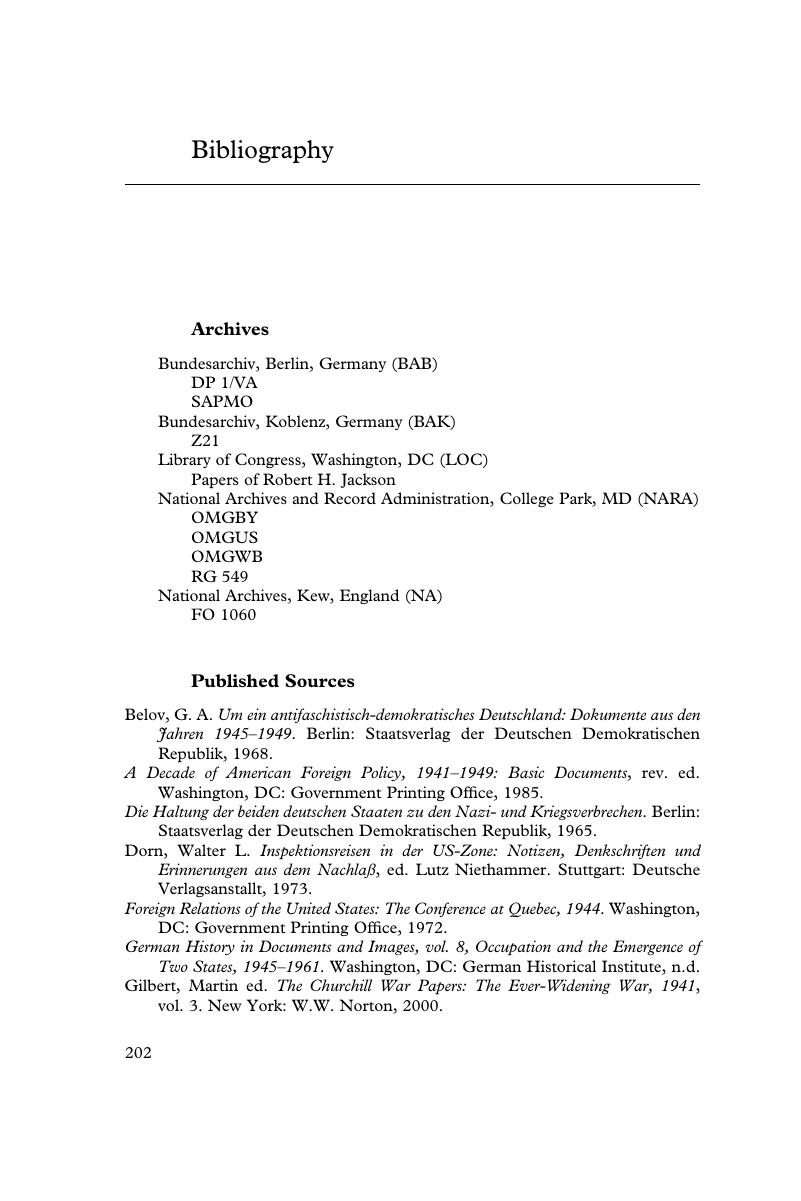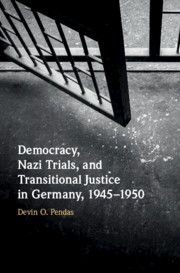Book contents
- Democracy, Nazi Trials, and Transitional Justice in Germany, 1945–1950
- Democracy, Nazi Trials, and Transitional Justice in Germany, 1945–1950
- Copyright page
- Contents
- Acknowledgments
- Introduction
- 1 Allied Justice and Its Discontents
- 2 Allied Policy toward German Courts
- 3 Debating Crimes against Humanity in the West
- 4 Debating Democracy in the East
- 5 The Trials That Did Not Happen
- Epilogue
- Bibliography
- Index
- References
Bibliography
Published online by Cambridge University Press: 11 September 2020
- Democracy, Nazi Trials, and Transitional Justice in Germany, 1945–1950
- Democracy, Nazi Trials, and Transitional Justice in Germany, 1945–1950
- Copyright page
- Contents
- Acknowledgments
- Introduction
- 1 Allied Justice and Its Discontents
- 2 Allied Policy toward German Courts
- 3 Debating Crimes against Humanity in the West
- 4 Debating Democracy in the East
- 5 The Trials That Did Not Happen
- Epilogue
- Bibliography
- Index
- References
Summary

- Type
- Chapter
- Information
- Publisher: Cambridge University PressPrint publication year: 2020

